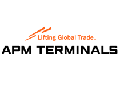HELLENIC SHIPPING NEWS interviews Mr. Basil M Karatzas ““ Vice President, Project & Finance ““ Compa
Shipping has been enjoying a rather positive run during the last months, especially in the dry bulk segment. Could you highlight the principle drivers of this development?
In short, it’s a case of a tight equilibrium of tonnage supply and demand. Tonnage supply is capped toexisting vessels available to trade; diminished demolitions and increased deliveries notwithstanding, the vessels that are available today or available within the very short term, i.e. six months, are not adequate to meet the available cargoes to be traded.
On the demand side of the tonnage equation, several factors contribute to vessel requirements, and by association, increased supply of cargoes in the market.Β The most obvious factor is the expansion of the world economies, in general, and in China and India, in particular.Β Additionally, certain modern management principals, such as outsourcing, etc require that production takes place at the most economically feasible location which is not necessarily close by the end consumer markets; the containership markets are usually associated with such growth.Β In addition to increased cargo supply, the dynamics of the market have been changing: the distance the cargo hauled is getting longer and therefore more vessels are required to just move the same amount of cargo.Β A good example is the outstanding growth of the BRIC economies (Brazil, Russia, Indian and China) and their need for raw material and energy sources means that cargo has to be delivered, irrespective of freight cost, at least for now.Β For example, China has been an importer of Australian coal, but with increased need for energy, it forces them to import coal from Brazil, therefore the ton-mile factor is increasing by a factor of four or five.
Further exacerbating the tight supply and demand situation are “exogenous’ factors, which lead to uncertainty, particularly in a tight market, realistically (recent case of port congestion in Australia with up to 30% of the capesize world fleet was tied up for more than a month) or sentimentally (“fear factor’ and market momentum i.e. what happens if another market shock push high rates even higher, and thus forces charterers to charter today in a high market for the fearΒ of tomorrow’s higher market, and thus a case of self-fulfilling prophecy).
Do you believe that this trend is sustainable for the following years, or we’ll most likely witness a downward trend (excluding of course any extraordinary factors)?
Unless unforeseen circumstances impact the market fundamentals (political events, etc), the market likely will be on an uptrend for the foreseeable future, let’s say the next one to two years.Β Strong demand will maintain freight rates at high levels and even push them even higher.Β However, one has to take into consideration that the orderbook is humongous by any standard, more or less on all asset classes, and new yards seem to pop up on a monthly basis.Β The full impact of the newbuildings will not be available until early in 2009 and onwards, at which time there is concern that the market might face an over-capacity situation.
Assuming that nothing extraordinary will take place in the next couple of years, the shipping markets seem to be able to remain in the growth phase.
Which has been the reaction of the shipping companies in these conditions? Could one say that investments in newbuildings and secondhand vessels have been intensified due to the increased cash flows?
It has been a joyous time to be a shipowner these days; especially, for owners who had ordered during the last downturn or bought tonnage at the beginning of the cycle.Β Most owners are “cash-rich’ and have been looking for opportunities to invest and deploy excess cash.Β Some publicly traded companies have opted for generous dividend policy returning excess cash to shareholders.Β Alternatively, both private and public shipping companies, it seems, have been looking for shipping projects, even in market sectors beyond their usual area of expertise.Β There is certainly increased activity in sale and purchase of second-hand assets, increased volume of newbuildings, increased level of market activity (asset play, fleet renewal), as well as search for alternate ownership structures (such as sale and leaseback transactions where capital is freed from assets, with usually recognition of capital gains).
What is the current market status in terms of rates in the tanker business? Which routes are proving more dynamic?
The last few years, tanker vessels had the spotlight on them.Β However, since last year or so (since BP’s Alaska pipeline leakage and Chavez’ on-and-off threat to stop selling crude oil to the USA), freight rates for tankers have barely fluctuated, and both the Baltic Dirty and Clean Indices have remained at subdued levels.Β Asset prices have remained very high for tankers, sometimes too high to be justified by the available charter rates. Last winter season was fairly strong, but recently freight rates for crude tankers have fallen precipitously.Β Most recent example are that freight rates for VLCC and Suezmax vessels obtaining half the rate paid at the same time last year.Β Aframax rates have also been lower year-over-year, but they do provide better economics in light of the lower cost structure as compared to a VLCC.Β In certain instances, spot rates for Aframaxes are higher than Suezmax or VLCCs, on a daily rate comparison.Β For instance, the average daily rate for a spot voyage for a VLCC from the Arabian Gulf to US Gulf was paying about USD 20,000 per diem while an Aframax tanker could obtain almost USD 50,000 per diem from Caribs to UK / Continent.Β More interestingly, recent resale VLCCs have been reported at all time high, around USD 150 million.
The clean sector has also showed signs of softening as compared to last year’s rates.Β Clean Panamax tankers seem to have suffered the most, while MR tankers (50,000 ton capacity) have been achieving rates almost identical to last year’s.Β Asset prices remain high, especially for modern and high-specification MR tankers with prompt-delivery, but this reflects the fact that few owners are willing to part with their tonnage and thus the high asset prices.
How would you describe the prospects in the shipping market?
Shipping is a very cyclical industry with substantial volatility; an industry that encompasses the whole globe and affects our daily lives!Β It is a very exciting business to be in!Β The fact that we are living in one of the best markets of all times, if not the best market ever, is an added bonus.Β Irrespective of whether the market will keep moving higher, stabilize at high levels, move slowly downwards or even fall precipitously, it is an argument for economists.Β However, the truth of the matter is that the shipping industry is not any more a localized industry (say Piraeus, London etc); it has moved from the sidelines to the main stage and into the spotlight.Β Proof is that there is significant following in the equity markets, whether New York, London, Athens, Oslo or Singapore, with second and third generation of owners, usually very knowledgeable in modern management and financial theories, and thus well qualified to position their companies and the industry overall for the next phase of growth and fully utilize the tools available to professionals in other industries.
Are we moving towards a market of concentration and larger groups, due to the capital intensive nature of the business, or will there always be room for smaller but niche-market conscious companies?
There is no question that shipping is a capital intensive business, even so at today’s high asset prices.Β Owners with bigger fleets specializing in certain market sectors will have the benefit of economies of scale and scope.Β The wave of consolidation that we have been experiencing is indicative of such trends.Β However, bigger and homogenized fleets, as much confidence as they provide to charterers, especially big-Β name corporate charterers, do not provide any additional benefits if the owner is not an expert in the sector and cannot deliver valued given a low cost basis.Β Bigger fleets usually entail substantial onshore infrastructure, in terms of technical, commercial and financial management.Β Bigger is not necessarily better, unless there is reason to do so.Β There is the clear example of a major shipowner in the VLCC market who has undertaken ground-breaking research and modeling in order to optimize vessel positioning, trading routes and meeting customer demands; this particular owner has historically traced movements of oil cargoes and, based on such research, built a model that can provide vessels’ best positions in order to optimize ton-milleage, allow for triangulation of routes and maximizing revenue.Β No surprise that he keeps most of the vessels in the spot market and he’s outperforming the market time and again.Β Yes, in this case a bigger fleet allows for optimizing, but this is not the case if the cost basis is not lower or if there are inefficiencies in the bigger company.
We foresee that there will be room for smaller players in the market, particularly in niche markets, where a smaller owner can exploit inefficiencies.Β Also, besides consolidation, there are also alternative structures that owners can utilize in order to mitigate for this capital intense business.Β Leasing has always been a traditional structure; popular in other industries such as airlines, but recently shipping companies have thoughtfully have been exploring such structures, especially with certain asset classes and certain markets.
Nikos Roussanoglou, Hellenic Shipping News

 Hellenic Shipping News Worldwide Hellenic Shipping News Worldwide, Online Daily Newspaper on Hellenic and International Shipping
Hellenic Shipping News Worldwide Hellenic Shipping News Worldwide, Online Daily Newspaper on Hellenic and International Shipping





















 PG-Software
PG-Software